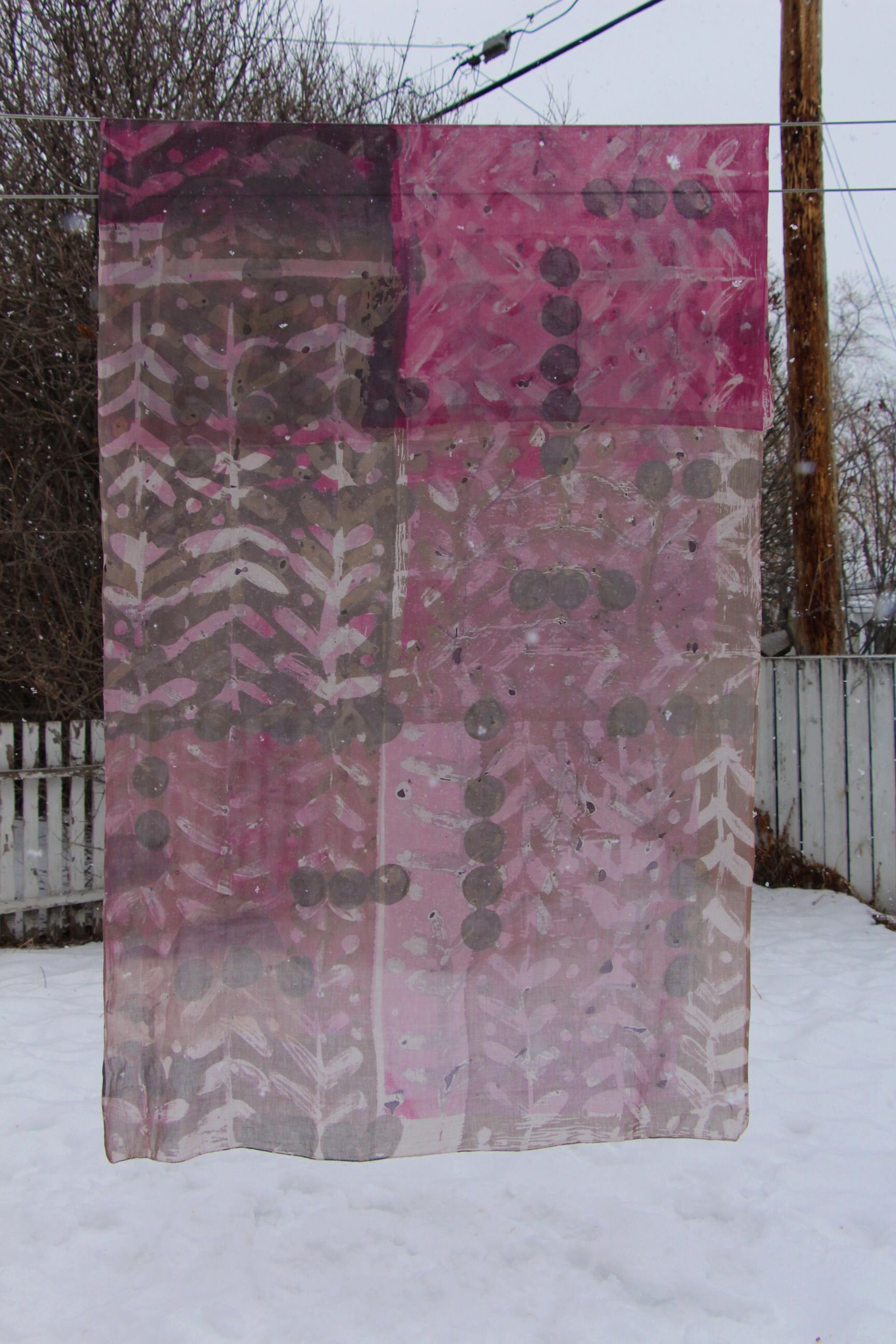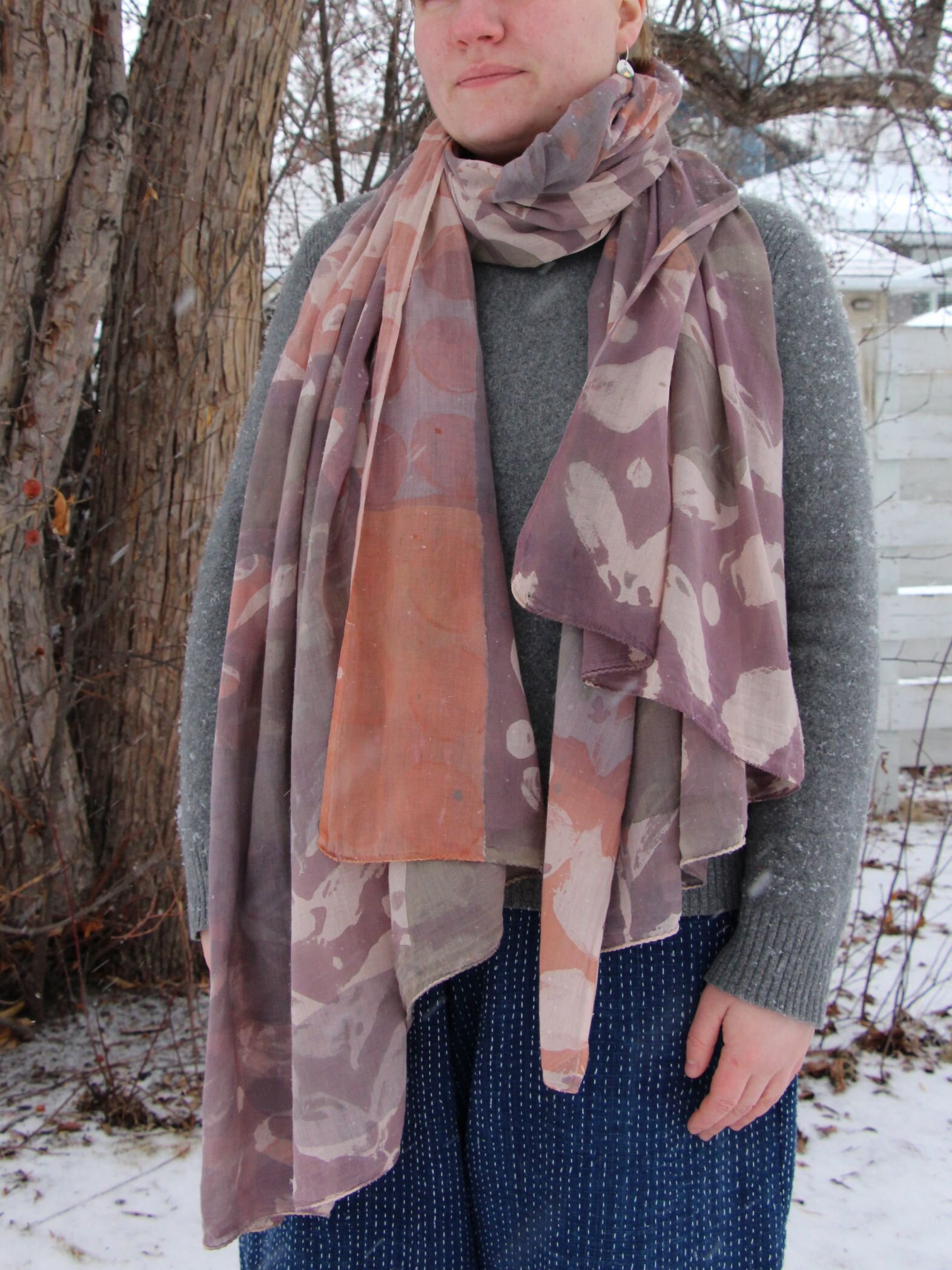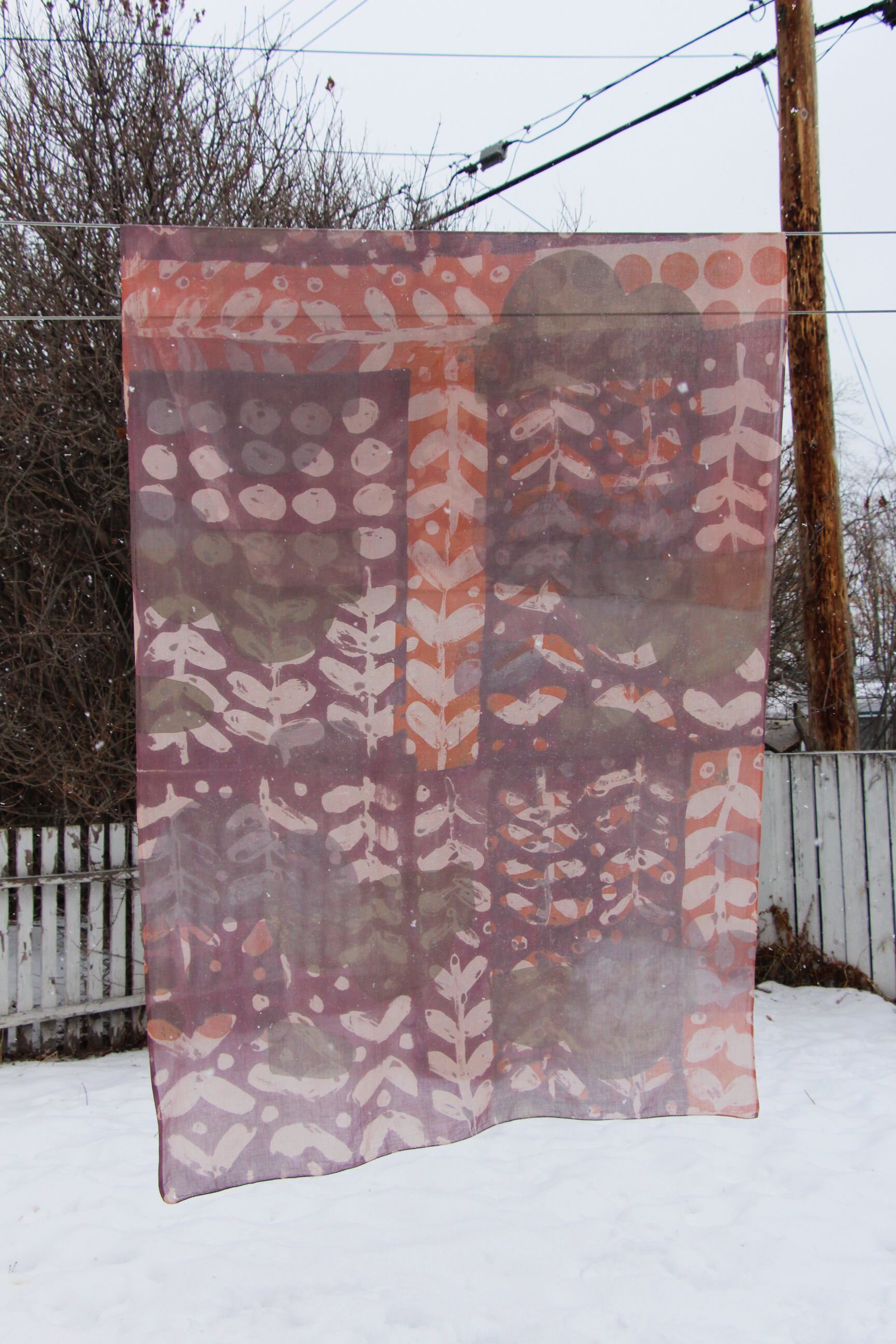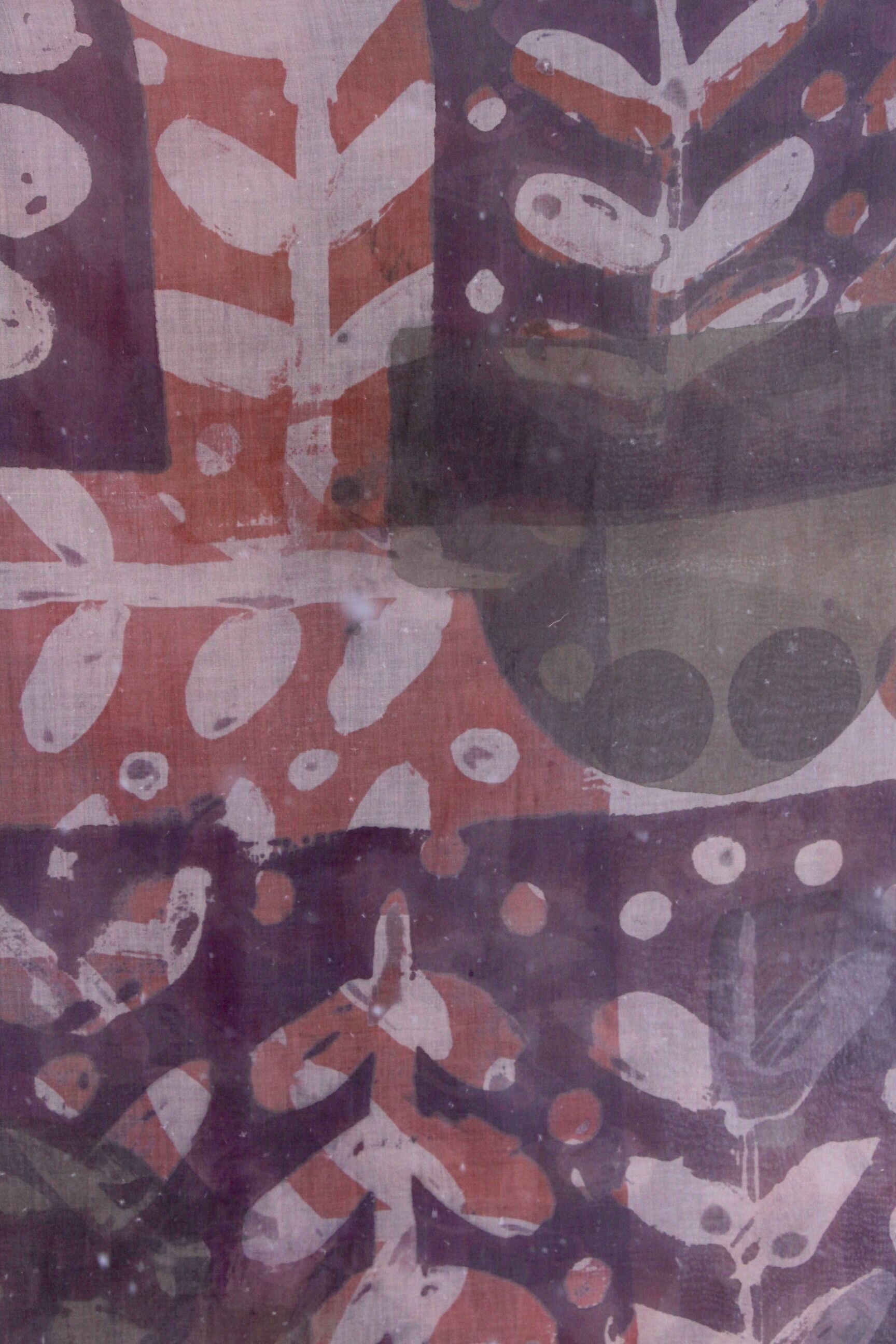http://www.naturaldyeconference.ca/
I’m very excited to share a new virtual Natural Dye exhibition that is on from Nov 2020- April 2021. My work “Seeds” has been included in the first half of the exhibition Symposium One: Learning and Knowing: Citizen research, Education & Best Practices.
Overview
Almost obliterated in the 19th century with the invention of synthetic dyes, today natural dyes derived from organic materials found in the environment (e.g. plants, minerals, insects, etc.) are undergoing a revival worldwide. Such revival is a response to the pollution, socio-economic violence and harmful practices of the mainstream textile industry and has led to both a rediscovery of the many historical, non-western and indigenous dyeing practices worldwide as well as innovations through scientific partnership (e.g. bio-dyes using bacterias).
Yet, in comparison with other regions in the world, Northeast America lags behind. Knowledge and cultivation of plants suitable for natural dyeing in Northeast America is still in its infancy. With regards to skills and knowledge, there is a glaring gap in educating future generations of fashion and textile professionals: there is no certification in natural dyes in any academic institutions in North America, let alone the Northeast. In terms of communities of professionals, natural dyeing is not simply about learning techniques in the narrow sense, it demands commitment and practice over many years: it is a long-term learning process that requires establishing a network and community of professional and dedicated natural dyers with local and global roots. These lead to the main challenge to be addressed for this conference: how to establish a vibrant natural dye sector in Northeast America to answer to the linked concerns with the protection of environments, health promotion, socio-economically just relations, cultural growth and creative expression?
The purpose of this Symposium Series is therefore three-fold: First, to further promote natural dyes as a crucial response to contemporary environmental concerns, health and socio-economic disparities, and the need for community building. Second, to foster new knowledge networks to support the development of the natural dye sector in Northeast America and third, to offer a space for the natural dye community to come together to explore and further develop best practices.
Land Acknowledgement
Even though this conference now has to happen online and unfortunately, we cannot be gathered in the same place, we would like to acknowledge the land. The organizing team for the conference is located in Toronto, which is on the traditional territory of many nations including the Mississaugas of the Credit, the Anishnabeg, the Chippewa, the Haudenosaunee and the Wendat peoples and is now home to many indigenous people. This territory is subject to the Dish with One Spoon Wampum Belt Covenant, an agreement to peaceably share and care for the Great Lakes region.
The conference host Ryerson University is built on land taken from indigenous people as part of ongoing colonial processes. As well, textile has long been part of global colonial processes and its history is marred by systemic appropriation, exploitation and destruction of humans, living beings and their environments worldwide. The practice natural dyeing in Northeast America today is a way to face these colonial processes and to commit to overcoming them.
The rediscovery of natural dyes today necessitates delving into past histories in order to rediscover recipes, processes and best practices. As well, scientific knowledge is key to producing new practices adapted to today’s demands, including moving from small-scale applications to reliable large-scale ones with industry impact. Learning and knowing about natural dyes thus necessitates an interdisciplinary approach and encompasses not only learning about how to make natural dyes but also teaching the public why natural dyes are crucial today.
http://www.naturaldyeconference.ca/symposium-one/exhibition-gallery
Symposium One: Learning and Knowing : Citizen research, Education & Best Practices
Exhibition
Until the advent of synthesized chemical dyes in the mid 19th century, natural dyes made from plants, insects and minerals were used by cultures around the world to colour textile fibres. Extracting colour from natural sources was part of the cultural knowledge passed through generations, and necessitated a deep understanding of colour sources. Today, we are re-learning many of these skills and reviving this knowledge through formal education systems, person-to-person transmission, community-based research, and citizen-science. Through these many areas of simultaneous formal and informal research, best practices are emerging, allowing us to imagine a wider scope for natural dye education. In this first section of the exhibition, artists look at sharing knowledge, formalizing creation-research findings and creating visual expressions of research.
“Seeds” (2020)
As a multidisciplinary artist I explore inherent qualities of different textile materials, sometimes in combination with other materials and objects. In my work, I purposefully reference Canadian climate, topography, local flora, fauna and the idea of the ‘mystic north.’ My work is influenced by traditional textile processes involving dying, printmaking and weaving. Choosing to work with natural dyes stems from a fixation towards complex colour pallets and traditional dyeing techniques. As humans we continue to seek direct experiences with nature and hands-on connections with objects. This is evident in the rise of ‘green’ and ‘local’ movements such as DIY and slow fashion. These movements promote a more symbiotic relationship with the creation of textiles from soil to sewing machine. Through research and material exploration, I aim to incorporate sustainability and craftsmanship into sensible, sought-after objects.
Glodensides Trial, Tombstone Territorial Park, Yukon
Inspiration for the creation of “Seeds”
The series “Seed” was influenced by her research in the Yukon and the natural landscapes the Territory presented. Using collected and sourced dyes, Forde has created colourways that reflect a blend of tones from the landscape of the arctic tundra. The scarves depict a combination of screen printing and stenciling techniques. Working with natural dyes allows the colours to combine smoothly and create unplanned secondary colours. This combination of structure and pattern in the work cannot be easily replicated resulting in a mono-print. Forde believes working this way is essential in maintaining the characteristics of hand printed textiles.
I am very grateful that my work has been included in this exhibition. Thank you to the organizing committee for all their hard work in putting this exhibition together! You can view the entire exhibition online: http://www.naturaldyeconference.ca/
-Caroline-







